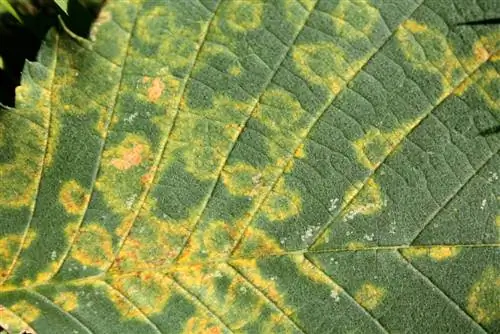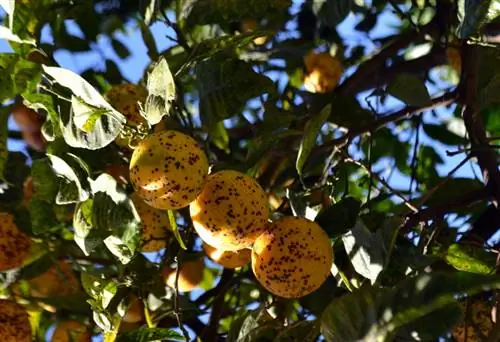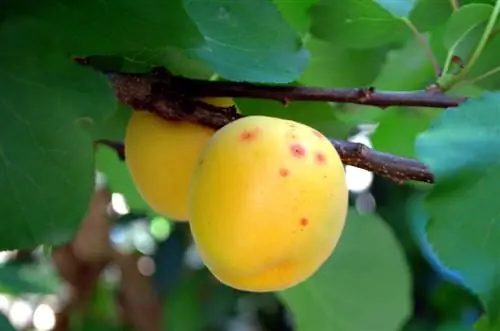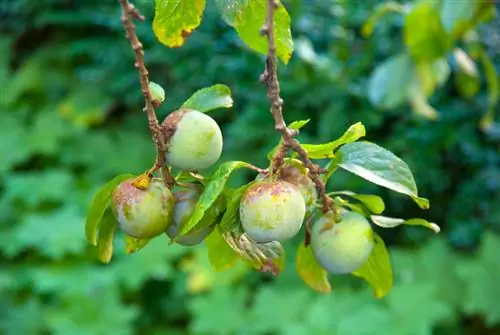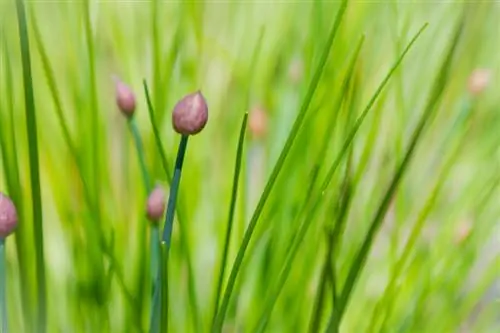- Author admin [email protected].
- Public 2024-01-10 23:11.
- Last modified 2025-01-23 11:21.
With its lush crown and robust bark, the elm makes an almost majestic, unshakable impression. But the picture is deceptive. Although the elm is widespread throughout most of the northern hemisphere, its population is declining. Diseases that specifically occur on the deciduous tree are to blame. Research is still underway to find effective treatments to prevent the extinction of the elm. If your elm tree also suffers from a disease, there are still some measures that can help in this case. Learn on this page how to recognize symptoms and treat them successfully.
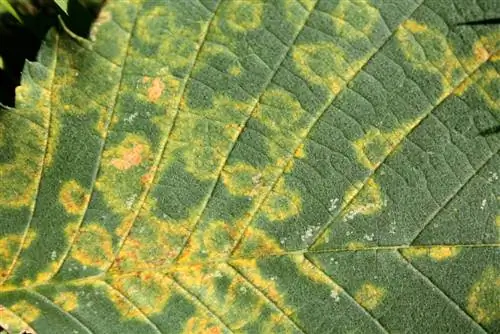
What diseases affect elm trees?
Elms are susceptible to diseases such as Dutch elm disease, Phloespora and Platychora leaf spot. Dutch elm disease is caused by the fungus Ophiostoma ulmi and is the most dangerous disease. Phloespora and Platychora leaf spots are fungal diseases that mostly affect the appearance of elms.
The most common diseases of the elm tree
- the Dutch elm disease
- fungal leaf spot pathogens
The Dutch elm disease
It starts with the elm bark beetle. Once the pest has transmitted the wilt fungus, the elm usually dies within 2-5 years. Dutch elm disease is considered the most dangerous disease of the deciduous tree and has already claimed numerous victims since it spread throughout Europe and North America. The disease originally comes from Asia and came to the Netherlands via wood imports. The fungus, so to speak, cuts off the elm's water supply by blocking the channels in the trunk. Some elm species such as the golden elm are less susceptible to this disease, others such as the field elm are severely affected. Unfortunately, experts are still looking for a reliable control agent.
Fungal leaf spot pathogens
Fungal leaf spot pathogens include
- Phloespora leaf spot disease
- and Platychora leaf spot disease
You can recognize the former disease by yellowish spots on the leaves of the elm, which turn brownish after just a short time. Fruiting bodies also develop on the underside of the leaves, which soon produce white, fluffy tufts. A layperson often mistakes Phloespora leaf disease for a mineral deficiency because of the similar symptoms. Don't feel safe if the fungus suddenly disappears. It simply overwinters in fallen leaves, but appears again the next summer. Fighting is only about optics. The fungus does not cause much damage. Shady locations and high humidity promote the infestation, which triggers Platychora leaf spot disease. The black spots, surrounded by a dark green halo, are clearly visible to the naked eye. The fallen leaves are primarily affected, which means that this fungus is also relatively harmless.

